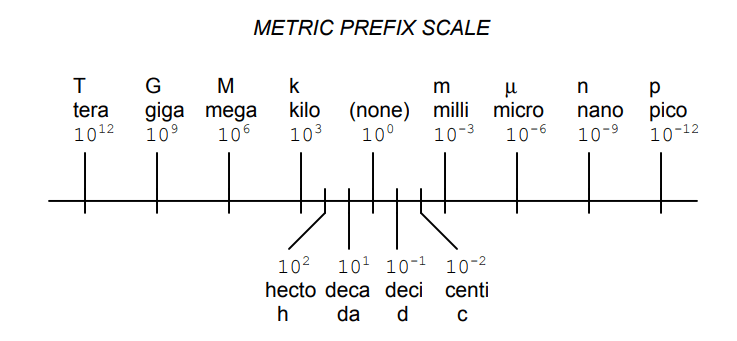Mahi Tuatahi 🔗
- Draw two parallel charged plates
- Make one plate positive, and the other negative
- Draw field lines between the two (use a ruler)
- Describe some important features of the lines
Ngā Whāinga Ako 🔗
- Be able to relate $E, F$ and $q$.
- Be able to calculate the force exerted on a charged object by an $E$ field.
Write the nga whāinga ako in your book.
Electric Fields & Forces 🔗
- Electric fields exert a force on charged matter.
- Charged particles are simultaneously repelled by their similarly charged terminal, and attracted by their oppositely charged terminal.
$$ \begin{aligned} \text{Electric Field Strength} &= \frac{Force}{Charge} \newline E &= \frac{F}{q} \newline E &= \frac{N}{C} = NC^{-1} \end{aligned} $$
Therefore $E$ has units of $\frac{N}{C}$ ($NC^{-1}$).
Pātai 🔗
$$ \begin{aligned} E &= \frac{F}{q} \newline \end{aligned} $$
Is electric field strength a scalar or a vector?
Whakatika 🔗
It is a vector, because one of the components that creates it is ,force, is a vector. This means that $E$ fields have both strength (magnitude) and direction.
Ngā Pātai 🔗
- A small charge of $2 \times 10^{-4}C$ experiences a force of $1.5\times10^{-4}N$. Calculate the electric field strength.
- A particle with charge $4.5 \times 10^{-5}C$ exists in an $E$ field with strength $3NC^{-1}$. Calculate the force exerted on it.
$$ \begin{aligned} & && \text{(K)} \newline & && \text{(U)} \newline & && \text{(F)} \newline & && \text{(S+S)} \end{aligned} $$
Whakatika Tahi 🔗
A small charge of $2 \times 10^{-4}C$ experiences a force of $1.5\times10^{-4}N$. Calculate the electric field strength.
$$ \begin{aligned} E &= \frac{F}{q} \newline E &= \frac{1.5\times10^{-4}}{2\times10^{-4}} \newline E &= 0.75NC^{-1} \end{aligned} $$
Whakatika Rua 🔗
A particle with charge $4.5 \times 10^{-5}C$ exists in an $E$ field with strength $3NC^{-1}$. Calculate the force exerted on it.
$$ \begin{aligned} E &= \frac{F}{q} \newline F &= E \times q \newline F &= 3 \times (4.5 \times 10^{-5}) = 1.35 \times 10^{-4}N \end{aligned} $$
Task/Ngohe 🔗
- Textbook: Electric Fields Q1, Q2, Q4, Q5
- New: pg. 192
- Old: pg. 177
- Homework Booklet: Q3a-b
Mahi Tuatahi 🔗
- Draw a diagram illustrating the system.
- Calculate the charge of the particle. Indicate the force arrrow on your diagram.
$$ \begin{aligned} & && \text{(K)} \newline & && \text{(U)} \newline & && \text{(F)} \newline & && \text{(S+S)} \end{aligned} $$
Te Whāinga Ako 🔗
- Be able to calculate the voltage between parallel plates
Write the date and te whāinga ako in your book
Voltage between Plates 🔗
$$ \begin{aligned} E &= \frac{V}{d} \end{aligned} $$

Discussion / Matapaki 🔗
$$ \begin{aligned} E &= \frac{V}{d} \end{aligned} $$
- What is the effect of increasing/decreasing voltage on the electric field strength?
- What is the effect of increasing/decreasing plate separation on the electric field strength?
Whakatika 🔗
- Increasing voltage will increase the field strength (with constant plate separation)
- Decreasing voltage will decrease the field strength (with constant plate separation)
- Increasing plate separation will decrease the field strength (with constant voltage)
- Decreasing plate separation will increase the field strength (with constant voltage)
Pātai 🔗
- Draw a diagram illustrating the situation, including the particle.
- Calculate the electric field strength between the two charged plates.
- Draw the field lines on the diagram.
- Calculate the size of the force experienced by the charged object.
- Draw an arrow on the particle indicating the direction of the force experienced.

Whakatika 🔗
- Calculate the electric field strength between the two charged plates
$$ \begin{aligned} & E = \frac{V}{d} \newline & E = \frac{500}{0.02} \newline & E = 25000NC^{-1} \end{aligned} $$
- Calculate the size of the force experienced by the charged object
$$ \begin{aligned} & F = Eq \newline & F = 25000 \times -4 \times 10^{-6} \newline & F = -0.1N \end{aligned} $$
Candles and Electric Fields 🔗
- Collect A Candles and Electric Fields sheet.
- Come up to the front and observe the demonstration.
- Use the observations to answer Task 1-4 on your sheet.
Task/Ngohe 🔗
- Worksheet 1: Q6a, 6bb, Q11a, 11b, 11d
- Textbook: Electric Fields Q7-8
- New: pg. 192
- Old: pg. 177